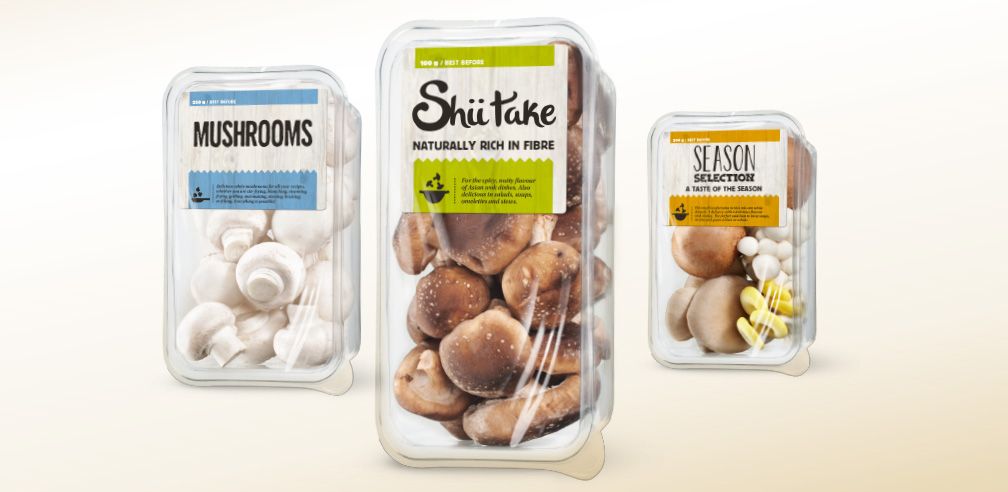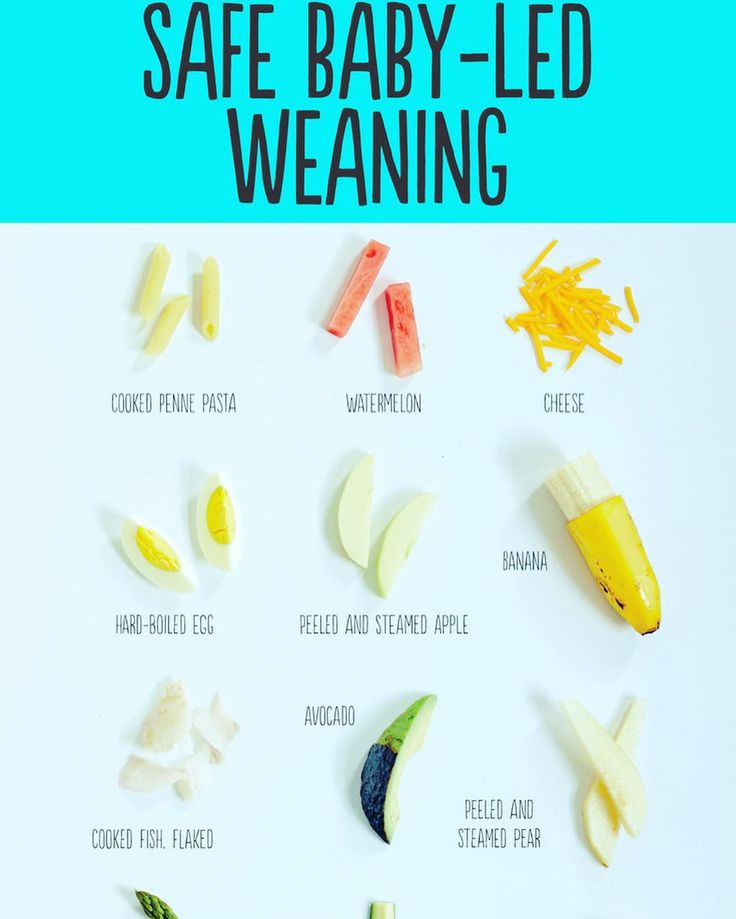Spicy food baby
When babies can have spicy food and spices like pepper
You can introduce herbs and many spices as soon as your baby starts eating finger foods (usually around 8 to 10 months) – just don't add salt or sugar to their food. You want your baby to get used to the natural flavors of food and be willing to eat food that isn't heavily salted or sugared.
You can introduce new flavors into your baby's diet with spices like turmeric and cumin; herbs such as basil, oregano, and thyme; or by adding small amounts of flavorful foods such as onion, garlic, and ginger. All of these not only add flavor to your baby's food, but texture and color, too.
Don't use spices too heavily at first. Begin with mild spices like cinnamon and nutmeg. Other spices you can introduce are cumin, paprika, cardamom, cloves, and ginger. You can also season their food with a little bit of black pepper.
You may have raised your child's tolerance for hot stuff if you ate spicy food while breastfeeding – trace flavors and substances pass through your breast milk. But wait until your baby is at least a year old before you add curry, chili pepper, hot peppers like jalapeno or habanero, or other strong flavors to your child's diet. Children younger than a year are just getting used to basic foods and are especially prone to food reactions and sensitivities.
Also think about how your baby typically reacts to new foods. If your child is more sensitive, stick to blander fare for a while. Though they rarely trigger food allergies, spicy foods can irritate the digestive system and cause gastroesophageal reflux. If your child has gastroesophageal reflux, you may need to avoid spicy foods all together.
As you introduce stronger flavors, serve small amounts of foods you know your child can tolerate. That way, if they get an upset stomach, you'll be able to identify the culprit – and know to wait until they're older to try serving it again.
Are spices good for babies?
While it isn't clear exactly what role spices play in health, spices and herbs have been used for medicinal purposes across many cultures for a long time. While your baby probably won't eat enough spices in a sitting to have direct health benefits, it's possible that having a variety of spices and herbs over their lifetime could influence their health.
While your baby probably won't eat enough spices in a sitting to have direct health benefits, it's possible that having a variety of spices and herbs over their lifetime could influence their health.
Introducing your child to a variety of flavors early on might also help them be open to trying and eating a variety of foods in their lifetime.
Can babies be allergic to spices?
It's possible for your baby to be allergic to spices, although it's usually an intolerance rather than an actual allergy. Life-threatening, anaphylactic reactions to spices are extremely rare, but it's important to know signs of an allergic reaction just in case.
Advertisement | page continues below
Signs of a food allergy include hives, itchy skin rashes, swelling, sneezing, nausea, vomiting, diarrhea, and pale skin. If you notice any of these symptoms in your baby, take note of what they've eaten and let their doctor know. If your baby has symptoms in more than one part of their body (such as hives and vomiting or diarrhea), it could be an anaphylactic reaction, which is an emergency.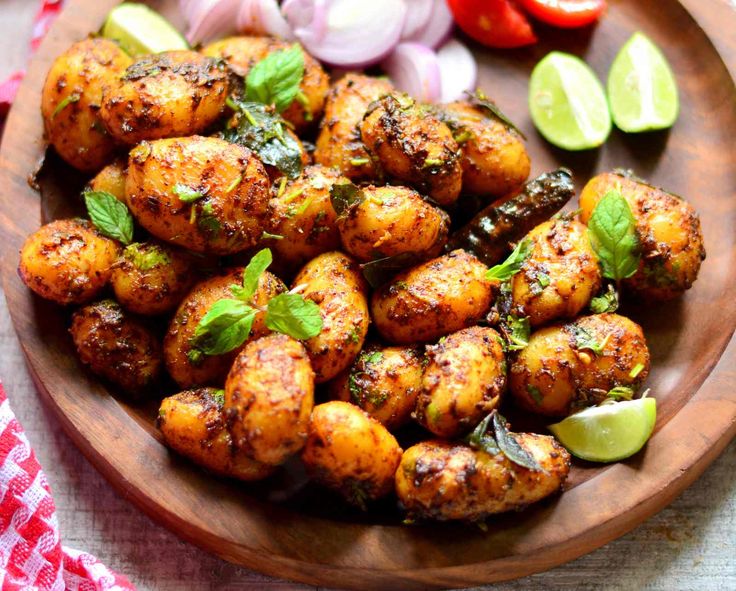
Other signs of an anaphylactic reaction are throat tightness, breathing problems, wheezing, lightheadedness, and loss of consciousness. If your baby shows signs of an anaphylactic reaction, call 911 or go to an emergency room immediately.
How to introduce spices into your baby’s diet
There are many ways you can introduce spices into your baby's diet. If you use spices when preparing your meals at home, feed your baby what the rest of the family is eating. Your baby could also try cinnamon in pureed apple, nutmeg with baked sweet potato, cardamom in baked goods, paprika on chicken, or cumin with beans.
You can also incorporate fresh or dried herbs, such as basil, mint, oregano, and rosemary. Cooking with onion, garlic, and ginger is also a great way to introduce new flavors to your little one.
Was this article helpful?
Yes
No
5 Experts Answer: Is It OK to Give Babies Spicy Food?
When you purchase through links on our site, we may earn an affiliate commission. Here’s how it works.
Here’s how it works.
Each week, MyHealthNewsDaily asks the experts to answer questions about your health.
This week, we asked pediatricians and nutrition experts: Can babies handle spicy food? Their answers have been edited and condensed for space.
Marilyn Tanner-Blasier, RD, pediatric dietitian at the Washington University School of Medicine in St. Louis and spokesperson for the Academy of Nutrition and Dietetics:
Things are changing: people are starting to be a little more open-minded about introducing new food to babies. The word on the street is, if you are eating spicy foods, and it's in your breast milk, then the kids will like the flavor later.
When you're introducing foods to kids, keep it simple initially – go ahead and start introducing table foods, what the family is eating. But keep in mind that if you're going to give them the adult version with all these spices and strong flavors, it may be too much. If they're refusing it, try to simplify the dish.
If they're refusing it, try to simplify the dish.
From the safety standpoint, you want to make sure to use fresh spices that haven't been sitting on the shelf for three or five years. People tend to set them on the shelf for a long period of time, and then they have things growing in them. If you feed children spices, check the expiration date.
***
Dr. Anca Safta, pediatric gastroenterologist, director of endoscopy and assistant professor at the University of Maryland:
In infants there's a lot of debate on food introduction, even among pediatricians.
There's a difference between hot spices, and the aromatic ones. Aromatic ones — such as cinnamon, nutmeg, garlic, turmeric, ginger, coriander, dill and cumin — are perfectly fine to introduce to children, even in infancy after 6 months.
When introducing solid food, one should go ahead and try especially the aromatic foods. We live in a society where we think that baby foods have to be bland, but really you don't have to do that.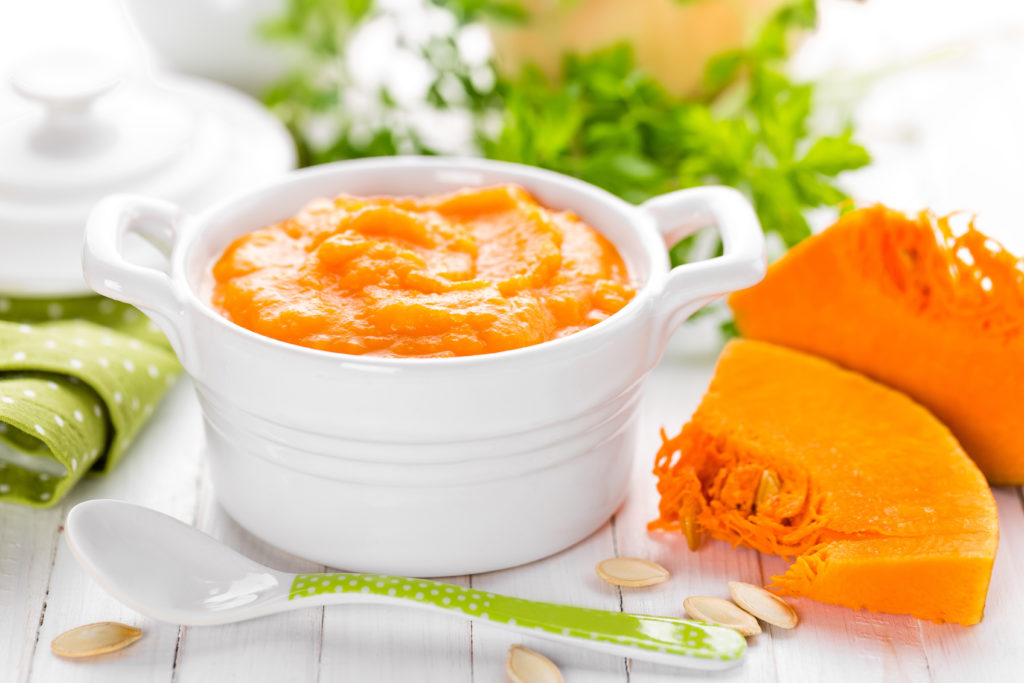
But I would not say the same for hot foods, per se. The hot part is not a taste, but rather involves stimulation of pain receptors, and infants might have a stronger and novel reaction to it, possibly creating an aversion.
There are pain receptors on the tongue and in the gut that are stimulated by spicy hot foods, specifically, a receptor called transient receptor potential vanilloid-1 (or TRPV-1), in the gut. Capsaicin — which makes peppers hot — binds to these receptors and sends pain signals to the brain. This is what creates the burning sensation on the tongue, pain in the gut and in some people, around the perianal area when defecating. Folks with irritable bowel syndrome can have bad reactions to spicy foods as a result of the stimulation of these receptors.
If we look all over the world, there are South American countries that eat a lot of hot foods, and there are many Asian countries that introduce it to kids early on. In some countries or cultures, spicy foods are introduced early, and with frequent usage — meaning it might be every day, it may be two or three times a week. Most children then become tolerant to different degrees of spiciness.
Most children then become tolerant to different degrees of spiciness.
With aromatic spices, the only caution I would say is to introduce one new spice every four to five days, just to see if there's an adverse reaction.
***
Vanessa Kane-Alves, RD, clinical nutrition specialist for the Adolescent Medicine/Eating Disorders Program at Children's Hospital Boston
Whatever a mom wants to enjoy and eat [while breastfeeding], that's what she should be eating. For most moms, eating spicy food is perfectly fine, and can also help the babies be less picky when they are eating at the table, because they're being exposed to different foods in the breast milk.
Breast milk can change its flavor, depending on a mom's diet. For example, some studies have shown some babies prefer garlicky breast milk.
Some cultures recommend moms avoid specific foods, and other cultures recommend those same foods be used to introduce children to solid foods.
For spicy foods, whatever the family's diet is should be what the baby or child is offered. If the child has some kind of reaction, intolerance, fussiness, then avoid that food. There is no list of spices to avoid.
If the child has some kind of reaction, intolerance, fussiness, then avoid that food. There is no list of spices to avoid.
***
Vandana Sheth, RD, and spokesperson for the Academy of Nutrition and Dietetics:
First of all, it's absolutely a good idea to introduce spices to babies and young children. We want to try a wide variety of herbs of spices — not only are they adding flavor, they're also providing an antioxidant punch.
If you look at India, the Middle East or Latin American countries, people add a lot of variety in their baby food. Using a variety of spices to make food taste good will expand the child's palate, and also cut down on the sugar and salt that we often use to make foods taste better.
But we want to be careful because some children can be more sensitive to herbs and spices. So just like any introducing other foods, wait a few days to see if there's a reaction. Then try another.
Garlic, onion, cinnamon and vanilla are easy to introduce in the child's diet. Sprinkling cinnamon on a child's warm cereal will make it taste much better.
Sprinkling cinnamon on a child's warm cereal will make it taste much better.
As for chili peppers — when you look at the cultural history of other countries, children are exposed to chili peppers, black pepper and white pepper. With young children, you want to start off with some of the other flavors in spices, then move on to the hot. In India they introduce turmeric, coriander and cumin first.
***
Dr. Stephen Borowitz, professor of pediatrics at University of Virginia
I'm not sure I would say it's good or bad, but it's perfectly reasonable and appropriate.
Cultures have been feeding babies the same spicy food adults eat for a long while. There's no reason to think that something spicy would be harmful to an infant any more than an adult. For most people who have gastrointestinal distress while eating spicy foods, it's not actually the spice, it's the grease that's the problem.
It's like eating a red hot candy, it burns in your mouth, but if you look at your mouth afterward there's actually no inflammation there. It's the same with most spicy food: you're not really doing any damage, you're just triggering a lot of nerves.
It's the same with most spicy food: you're not really doing any damage, you're just triggering a lot of nerves.
A baby's digestive capacity is pretty darn normal shortly after birth, so the differences are the difference in taste, and the ability to chew. Once they acquire a taste for the solids, they do just fine with hot foods. I don't think there's any contraindication to starting solid foods, spicy or not, as long as they are still getting nutrition, and in babies that's through milk.
More "5 Experts Answer" columns:
Lauren Cox is a contributing writer for Live Science. She writes health and technology features, covers emerging science and specializes in news of the weird. Her work has previously appeared online at ABC News, Technology Review and Popular Mechanics. Lauren loves molecules, literature, black coffee, big dogs and climbing up mountains in her spare time. She earned a bachelor of arts degree from Smith College and a master of science degree in science journalism from Boston University.
Eat Spicy Live Longer
Photo: Getty Images
A large new study in China has found that people who eat spicy food daily (or almost daily) live longer. But this study is based only on statistical observations, so it is impossible to draw accurate conclusions about the existence of a causal relationship between eating spicy food and life expectancy. Spiegel magazine talks about this study.
Fresh chili, dried chili, chili sauce, chili oil: red pepper has a special place in Chinese and some other cuisines of the world. Peppers contain capsaicin and some other ingredients that make the tongue burn and make the person who eats it sweat.
Few studies indicate that capsaicin has other, longer lasting effects that benefit the body. It prevents the occurrence of cancer, promotes blood circulation and digestion.
An international team of researchers led by Jun Lu of Peking University Medical Center wondered if people who eat spicy foods often actually live longer. In their article published in the British Medical Journal, they prove that spicy lovers have a significantly lower risk of death (at least over the seven-year period of the study). For them, the risk was 14% less. A similar result was also obtained when accounting for deaths solely due to heart disease, cancer, and respiratory diseases.
In their article published in the British Medical Journal, they prove that spicy lovers have a significantly lower risk of death (at least over the seven-year period of the study). For them, the risk was 14% less. A similar result was also obtained when accounting for deaths solely due to heart disease, cancer, and respiratory diseases.
The fact that spices have an antibacterial effect has long been known. However, in the study sample, the number of deaths due to infections was so low that scientists cannot reasonably conclude that the risk of death is associated with the consumption of spicy food.
Nearly 500,000 participants
Nearly half a million people living in ten different cities and rural areas provided data on their diet. 22224 participants died during the study period.
Most - about 57% - ate spicy food less than once a week. About 31% did it 6 or 7 days a week. The remaining 12% took spicy food 1-2 or 3-5 times a week. Various versions of the preparation of chili peppers were used especially often.
The relationship between spicy eating and risk of death was almost the same for men and women, scientists say. Curiously, for those participants who regularly consumed alcohol, this relationship was weaker.
This does not necessarily mean that capsaicin and other hot-tasting substances prolong life. Similarly, it can be argued that it is likely that the Chinese, who especially appreciate spicy food, naturally have a specific body constitution that is more prone to longevity.
Or the living conditions of the studied groups vary in other ways, which explain the difference. So, for example, "spicy lovers" live much longer in rural areas than in cities.
Could it be the tea?
In an accompanying commentary to the article, epidemiologist Nita Foruhi of the University of Cambridge suggested another possible explanation for the observed relationship. Everything can really depend on the presence of the habit of drinking tea. She writes that there is a high chance that people who consume more chili peppers than the average person on the planet also consume more water and tea. There are also indications that tea consumption affects longevity.
There are also indications that tea consumption affects longevity.
Statistical studies are often criticized. Some do not believe in them, consider them untenable and therefore unnecessary (“there are three types of lies: lies, blatant lies and statistics”). However, mistakes are often made by those who interpret the results obtained by statistical methods. The scientific result of a statistical study is, for example (as in the case of this article) the discovery of a relationship between two phenomena, which is non-random with a very high probability. But it is impossible, based on such a finding, to assert that phenomenon A causes phenomenon B - just if there is A, then very often there is B, and vice versa. There are other approaches to establishing causal relationships, both statistical and non-statistical. It is important not to attribute more to the research result than the research actually shows.
Prepared by Vladimir Grigoriev
Read online “My best friend is the stomach.
 Food for smart people”, Elena Motova – Litres
Food for smart people”, Elena Motova – Litres © Motova E., text
© OOO AST Publishing House
* * *
From the author
Once, when I was ten years old, our teacher fell ill. The class was not allowed to go home, but they gave us books and told us to read. Even then, I had a bad habit of opening a book and glaring at it from anywhere. I came across something like physiology for the little ones, a chapter on digestion. I remember being completely captivated, reading and re-reading, almost learning the book by heart, this first journey into the inner world of a person was so amazing. I still have those pictures before my eyes.
I graduated from high school and medical school, and then did my clinical residency. For the second ten years I have been working as a doctor, continuing to learn something new every day, and I never cease to be surprised at what a complex and perfect system a person is. How wisely and intelligently everything is organized, how harmoniously and beautifully it works! Most of the processes of the human body are autonomous, that is, they occur independently of our will and consciousness. They are designed to preserve life and health. Let's not be elephants in a china shop. Before changing (or not changing) lifestyle, nutrition, activity, we will consult a doctor. At least read about how it all works and works.
They are designed to preserve life and health. Let's not be elephants in a china shop. Before changing (or not changing) lifestyle, nutrition, activity, we will consult a doctor. At least read about how it all works and works.
The book is based on evidence-based medicine [1] and contains numerous references to scientific research. Gone are the days when a doctor had to test methods of treatment on himself and unfortunate patients, act blindly and rely only on the opinion of authorities (opinion-based medicine). Gone are the days when nothing needed to be explained. Reliable medical information is available to anyone who wants to know it, and that's great. If you want to delve into the subject, there are books, articles, studies in Russian and English that I used at your service.
Chapter 1. Stomach and Co.
1.1. Taste. Taste buds and basic tastes. Taste sensitivity and harmony. Aroma, temperature and texture of food. Why do we love what we love.
1. 2. Digestion. How is the gastrointestinal tract. Chew, swallow, stir: mechanical digestion. Chemical transformations of food and digestive enzymes. About separate meals.
2. Digestion. How is the gastrointestinal tract. Chew, swallow, stir: mechanical digestion. Chemical transformations of food and digestive enzymes. About separate meals.
1.3. How it all ends: absorption and distribution. Small intestine tennis court.
1.4. At the forefront of science: the gut microbiome. What food do your bacteria need? Prebiotics and probiotics.
1.5. Pancreas. Should you drink enzymes if you overeat? Two jobs of the pancreas: enzymes and hormones. Insulin and glucagon - the unity and struggle of opposites.
1.6. What does the gallbladder do? Gallbladder, ducts and valves. Take care of the bladder from a young age: prevention of gallstone disease.
1.7. The liver is mon amour. Biochemical factory and warehouse for finished products. The Real Detox: How the Liver Detoxifies Poisons. Help the liver! Quack detox.
1.8. Alcohol. To drink or not to drink? The benefits and harms of alcohol in research. The transformation of ethyl alcohol in the body. Alcohol and metabolism. Myths about alcohol. Recommendations for alcohol consumption.
Alcohol and metabolism. Myths about alcohol. Recommendations for alcohol consumption.
1.1. Taste and taste sensitivity
Taste buds and basic tastes
When the amount of nutrients in the blood drops, the brain picks up and literally makes us go and eat. Digestion and the digestive system are needed to extract and assimilate from food those molecules that are indispensable and are not synthesized in the body, can be used as building material or give us energy.
Digestion begins in the mouth. In our almost automatic recognition of taste, smell, temperature and texture of food, many different receptors, their nerve pathways, subcortical structures of the thalamus and the cerebral cortex are involved. There are five basic tastes: sweet, salty, sour, bitter, and umami (specifically meaty). We are also able to capture the taste of certain fatty acids in the composition of fats. Receptors for fat molecules have been found, so the sixth basic taste is most likely fat.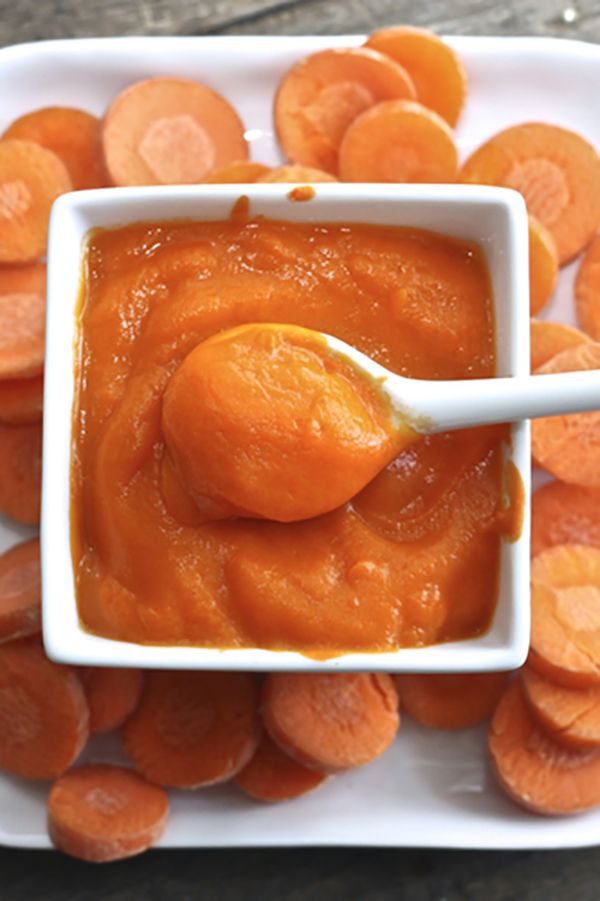 Chinese gastronomy, unlike European gastronomy, caught and described umami and fatty taste much earlier.
Chinese gastronomy, unlike European gastronomy, caught and described umami and fatty taste much earlier.
The ability to distinguish between tastes has developed evolutionarily. It is important because it allows you to choose nutritious and healthy food. The sweet taste is pleasant because the glucose in carbohydrates nourishes the brain. This is the very first taste that a child gets acquainted with, because mother's milk contains lactose - milk sugar. The salty taste tells us that we will get enough sodium and chlorine, important minerals to maintain fluid and electrolyte balance. Umami reports how rich the food is in protein - the main building material of our cells. Fatty taste is some essential nutrients and energy in a concentrated form that allows you to not die of hunger and last until the next meal. When no one guaranteed daily food, it was important.
A sour taste tells us that the food is unripe or spoiled. The aversion (aversion) to bitter is due to the fact that most poisons are bitter. Therefore, we have many different receptors for this taste, and bitter solutions are used to test taste sensitivity. Especially strong is the rejection of bitterness in children. So in Desperate Housewives, Linnet, a mother of many children, cannot force her children to eat broccoli. Even the super nanny who has those volcanic boys like silk falls short of the challenge and gets broccoli in the face. Some plants, including this cabbage, are slightly bitter. Children, as food conservatives, are better at picking up flavors and therefore refuse to eat it. Do not force them, better offer other vegetables. Mastering new tastes takes place step by step, you just have to not be afraid to try.
Therefore, we have many different receptors for this taste, and bitter solutions are used to test taste sensitivity. Especially strong is the rejection of bitterness in children. So in Desperate Housewives, Linnet, a mother of many children, cannot force her children to eat broccoli. Even the super nanny who has those volcanic boys like silk falls short of the challenge and gets broccoli in the face. Some plants, including this cabbage, are slightly bitter. Children, as food conservatives, are better at picking up flavors and therefore refuse to eat it. Do not force them, better offer other vegetables. Mastering new tastes takes place step by step, you just have to not be afraid to try.
Taste sensitivity and slimness
We all differ from each other in our ability to perceive taste. If you stick out your tongue and carefully inspect it, you can see mushroom-shaped structures rising above the surface - papillae. They contain receptors that, when combined with taste molecules, give the brain an idea of what we are eating. The number and sensitivity of receptors are different for everyone. This has been tested in neuroscience studies, both by responding to the bitter-tasting reference chemical propylthiouracil and by counting the number of taste buds. You can test yourself and loved ones. Color the tip of the tongue with blue food coloring and count all the taste buds under a magnifying glass, as shown in the figure (Fig. 1.1). If there are thirty or more of them, you feel the shades of taste better than 75% of the people around you. If there are less than fifteen papillae, it is more difficult for you to distinguish tastes.
The number and sensitivity of receptors are different for everyone. This has been tested in neuroscience studies, both by responding to the bitter-tasting reference chemical propylthiouracil and by counting the number of taste buds. You can test yourself and loved ones. Color the tip of the tongue with blue food coloring and count all the taste buds under a magnifying glass, as shown in the figure (Fig. 1.1). If there are thirty or more of them, you feel the shades of taste better than 75% of the people around you. If there are less than fifteen papillae, it is more difficult for you to distinguish tastes.
Fig. 1.1. Taste buds of the tongue
Those who have a better sense of taste eat less and are more picky about food, drink less alcohol and weigh less on average. Is it worth it, if you are not a highly sensitive person, to spit on maintaining a stable weight? Of course not. Taste is formed in the brain. Mozarts are rare, but many of us learn to love and understand music. Likewise with taste. It is developing, we just need to pay more time and attention to how we eat.
Likewise with taste. It is developing, we just need to pay more time and attention to how we eat.
The number of taste buds and their sensitivity, according to research, are determined by genes. But our eating behavior is a more complicated story. It is strange to think that slender Frenchmen with their "French paradox" are genetically more perfect than everyone else. But in this country they don't eat in a hurry or on the go, it's customary to take care of a beautiful presentation and get more taste experience with less food. Gourmetism, not gluttony - that's the whole French paradox. And of course, the best seasoning for food is the feeling of hunger.
Aroma, temperature and texture of food
Smell is an important part of taste perception. Olfactory receptors are thousands of times more sensitive than taste buds. When our nose is stuffed up and we don't smell, food seems terribly tasteless. Of course, we are not dogs, but most of us are able to follow the chocolate trail left on the grass.
In addition to smell and taste, every type of food and drink has physical properties that give it a certain mouthfeel. You may not agree with me, but half the fun of popcorn is that it's crunchy. Thick or soft, hot, warm or cold, thick or thin, viscous or elastic, crunchy or creamy - try to re-evaluate the usual food at lunch today.
What does hot pepper taste like? Capsaicin from chili peppers causes a burning sensation on the tongue. Most people reject such food, however, if you start with small doses, you may like it spicy - some like it hot. But do not get carried away: excessively spicy food prevents you from feeling other tastes. If there is too much pepper on the tongue, do not try to wash it off with water - capsaicin does not dissolve in water, but in fat. To reduce the burning sensation, use something fatty, such as kefir.
As for the temperature of the food, you will get the best taste if you heat it up to 22-37 °C. If you want to enjoy the aroma, the food must be hot. This releases more volatile aromatic compounds, which is why we are so excited about the smell of freshly brewed coffee.
This releases more volatile aromatic compounds, which is why we are so excited about the smell of freshly brewed coffee.
Why we love what we love
I teach courses on nutrition, eating behavior and other dietary wisdom for ordinary people. One of the students wrote to me this morning, boasting that she was going to buy smaller clothes. On the course, among other things, I teach to pay more attention to taste sensations and enjoy food without overeating. In today's diet-riddled world, this is an incredible challenge. “Whoever eats with pleasure will definitely not crawl through the door soon.” "Anything that tastes good is forbidden." Tatyana loves fried potatoes very much, and now she has begun to afford it. This minimized the need for high-calorie junk food. More mindful and conscious eating, focusing on having fun, led to the fact that the portion sizes themselves decreased, and the feeling of guilt disappeared.
We eat not because we are greedy, but because it is a basic, vital need. We just need to do something useful for survival, and the brain will reward us with a sense of pleasure. This is why food is a universal reward, closely related to emotions. We are born hedonists. A classic study of the connection between food and emotions was carried out on babies 1–2 hours after birth by Israeli pediatrician Jacob Steiner. They were given solutions of different tastes and observed the reaction. The salty taste aroused some interest, the sour did not like: newborns pursed their lips with hostility. Gorky caused disgust and an attempt to spit out this rubbish. The sweet taste was associated with pleasure and joy. Nobody taught them this. It's biology, baby.
We just need to do something useful for survival, and the brain will reward us with a sense of pleasure. This is why food is a universal reward, closely related to emotions. We are born hedonists. A classic study of the connection between food and emotions was carried out on babies 1–2 hours after birth by Israeli pediatrician Jacob Steiner. They were given solutions of different tastes and observed the reaction. The salty taste aroused some interest, the sour did not like: newborns pursed their lips with hostility. Gorky caused disgust and an attempt to spit out this rubbish. The sweet taste was associated with pleasure and joy. Nobody taught them this. It's biology, baby.
Instinctive love for sweet, salty and fat from the first days of life is connected with the fact that we need these three components for survival. The brain categorizes them as "delicious". Modern food production is based on this understanding of physiological and biological mechanisms. To entice the consumer to buy and eat more, salt, sugar, and cheap fats are generously added to prepared foods.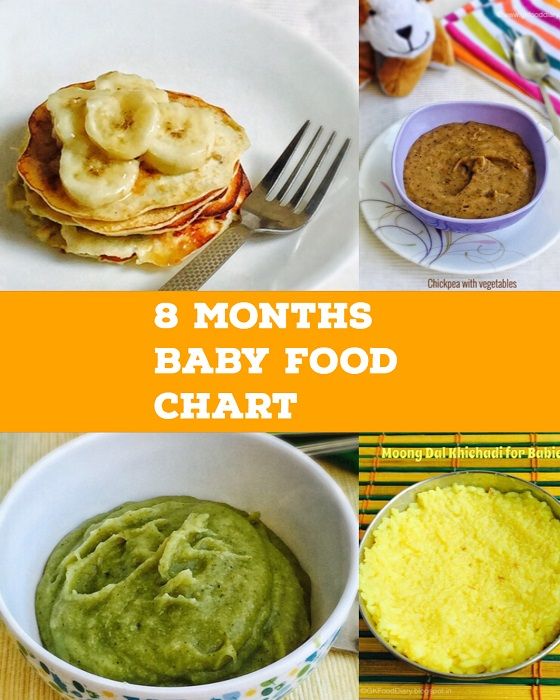 We will talk more about the cunning of fast food and junk food producers in Chapter 8.2.
We will talk more about the cunning of fast food and junk food producers in Chapter 8.2.
Receptor is a sensitive nerve ending or a special cell that receives a signal, converts it or transmits it as a nerve impulse.
The neuroscience of taste (neurogastronomy) is an interdisciplinary field that deals with all aspects of taste perception and the relationship between the brain and food.
Dietary mindset - based on myths and legends and without scientific justification, following food restrictions that supposedly maintain a stable weight and promote health.
Taste preferences - mutual influences of food and the brain, genetically determined, but subject to changes under the influence of environmental and social factors. Depend on the current needs of the body in certain nutrients.
1.2. Mechanical and chemical digestion
Get to know the digestive system
Digestion is the gradual transformation of food in the body under the influence of mechanical and chemical factors. Large molecules are broken down into smaller ones that can be absorbed through the intestinal wall, enter the bloodstream and be used by cells. The gastrointestinal tract is simple and elegant: it is a flexible muscular tube that stretches from the mouth to the anus. Pharynx, esophagus, stomach, small intestine, large intestine, which ends in the sigmoid and rectum - these are 8-9meters and there is a digestive factory. Let's not forget the liver, gallbladder and pancreas (Fig. 1.2).
Large molecules are broken down into smaller ones that can be absorbed through the intestinal wall, enter the bloodstream and be used by cells. The gastrointestinal tract is simple and elegant: it is a flexible muscular tube that stretches from the mouth to the anus. Pharynx, esophagus, stomach, small intestine, large intestine, which ends in the sigmoid and rectum - these are 8-9meters and there is a digestive factory. Let's not forget the liver, gallbladder and pancreas (Fig. 1.2).
Fig. 1.2. Digestive System
Chew, Swallow, Stir: Mechanical Digestion
Take an apple, dear reader. How do you eat it? First, bite off small pieces and grind them between your teeth. A portion of food is well chewed and moistened with saliva, now the food bolus is easy to swallow, and it moves along the esophagus. Peristaltic waves help him - contractions of the smooth muscles of the esophagus, stomach and small intestine, which move food further. We do not feel them, as well as the next stages of digestion, if everything goes well: our digestive tract works autonomously. We make his work easier when we eat calmly and unhurriedly. Chewing your food thoroughly is known to help society. You don’t need to specifically count chewing movements - rely on common sense and just take your time.
We make his work easier when we eat calmly and unhurriedly. Chewing your food thoroughly is known to help society. You don’t need to specifically count chewing movements - rely on common sense and just take your time.
Food enters the stomach from the esophagus. At the base of the esophagus is a circular muscle press - the sphincter, which closes and prevents the contents of the stomach from returning to the esophagus when the stomach contracts. In the stomach, which looks like a stretched muscle bag, food is mixed almost like in a concrete mixer, water is added if necessary. The stomach is like a reservoir for storing food, which is why it is so elastic. At the exit from the stomach, food becomes a semi-liquid homogeneous slurry - chyme. Further, in small portions, the size of which is controlled by the pyloric sphincter lying between the stomach and intestines, the chyme enters the duodenum. In a few hours, the stomach gradually empties, and the food goes on an exciting journey through all parts of the small intestine.
Unusual transformations of food
Our food consists of nutrients - proteins, fats and carbohydrates, which carry energy with them. In 1 g of proteins and carbohydrates, approximately 4 kcal of energy, in 1 g of fat - 9 kcal. Proteins, like train cars, are made up of amino acids; complex carbohydrates - from glucose; fats (the main part of dietary fats are triglycerides) - from glycerol and fatty acids.
The digestive system helps break down large molecules into smaller ones for use by cells. It extracts vitamins, micro- and macrominerals from food, which do not carry energy, but are also important for the happy life of cells. In our food, there are still a lot of substances whose purpose is just beginning to be studied.
Digestive enzymes
The gastrointestinal tract secretes digestive juices containing enzymes. They carry out chemical transformations of nutrients. The names of enzymes usually end in -ase: lipase, protease, amylase are classes of enzymes that break down fats (lipids), proteins (proteins) and carbohydrates (starch). The first part of the name is the substance on which the enzyme acts, "-ase" means the enzyme itself.
The first part of the name is the substance on which the enzyme acts, "-ase" means the enzyme itself.
Digestion starts in the mouth, because saliva already contains an enzyme that breaks down carbohydrates. If you chew a piece of bread longer, you can feel the sweet taste. This is because simple sugars are split off from large starch molecules. Fats are also partially broken down in the mouth. Salivary lipase is especially important for infants, who get a significant amount of energy from milk fat.
The stomach continues to work with fats, but its main task is to start digesting proteins. Gastric juice contains hydrochloric acid, water, and pepsin, an enzyme that breaks down proteins. It becomes active and works only in an acidic environment. The cells of the stomach produce a thick mucus that protects them from acidic gastric juices. A legend has survived to this day that if you do not eat for a long time, the stomach will begin to digest itself. Fortunately, this is impossible: the mucus is so thick that it serves as a reliable barrier to acid.
From the stomach, food that is difficult to recognize because it has turned into a pureed chyme, portions enters the duodenum. This is where the fun begins.
The duodenum is connected to the pancreas, which, with the precision of a high-class laboratory assistant, measures not only sodium bicarbonate (soda) to neutralize hydrochloric acid, but also all the necessary enzymes - amylase, lipases and proteases. In addition, bile enters the duodenum from the gallbladder to emulsify fats - break large fat droplets into smaller ones to facilitate their digestion. If you have made mayonnaise, you can easily imagine what an emulsion is.
Under the action of bile, pancreatic enzymes and intestinal juice, nutrients break down into tiny components and begin to be absorbed. Water, fiber and some minerals continue their journey from the small intestine to the large intestine.
Divide and conquer!
The idea of separating proteins from carbohydrates seems at first sight slender and logical. Separate nutrition is so replicated that it seems self-evident. On the practical side, this means that you should eliminate all foods that combine these nutrients from your diet, right? So, from now on, dairy, eggs, vegetables, fruits, cereals, nuts, seeds, legumes are excluded for you. You can eat cheese, meat and fish along with fat, or fat with candy, marshmallows and the contents of the sugar bowl. Ridiculous, right? We are omnivorous precisely because it is biologically expedient. Only sometimes there is intolerance to certain products or their combinations.
Separate nutrition is so replicated that it seems self-evident. On the practical side, this means that you should eliminate all foods that combine these nutrients from your diet, right? So, from now on, dairy, eggs, vegetables, fruits, cereals, nuts, seeds, legumes are excluded for you. You can eat cheese, meat and fish along with fat, or fat with candy, marshmallows and the contents of the sugar bowl. Ridiculous, right? We are omnivorous precisely because it is biologically expedient. Only sometimes there is intolerance to certain products or their combinations.
Digestion begins in the mouth, where enzymes work to break down carbohydrates and fats. Their action continues in the stomach, in the thickness of the food bolus, until the gastric juice gets there to start digesting proteins. In the duodenum, where food in a semi-liquid state enters from the stomach, several enzymes act at once, which are produced by the pancreas. Proteins, fats and carbohydrates are digested there. In the cells of the small intestine, enzymes are synthesized that finally break down the nutrients that come from the upper sections. To get the simplest molecules, lipase, sucrases and peptidases work.
To get the simplest molecules, lipase, sucrases and peptidases work.
The idea of separate food is sucked from the finger and disguises, besides the usual ignorance, an attempt to restrict a person in food and reduce its energy value. Why this does not work, I will explain in chapter 2.3. The digestive system “knows” what we eat, and through signaling molecules – hormones – regulates the amount of digestive juices and enzymes, adjusting to us. A healthy gastrointestinal tract will easily digest any food and cope with almost any food combination.
Digestion is a successive transformation of food in the gastrointestinal tract under the influence of mechanical and chemical factors. Large molecules are broken down into smaller ones, and those are already absorbed into the blood and used by cells.
Gastrointestinal tract (GIT) – is a flexible muscular tube that runs from the mouth to the anus. The digestive system consists of the mouth, pharynx, esophagus, stomach, small and large intestines, liver, gallbladder, and pancreas.
Digestive juices - fluids secreted by the digestive system; they contain enzymes.
Separate nutrition is an unscientific concept that ignores the structure and functioning of the digestive system, does not take into account the activity of digestive enzymes and their regulation.
1.3. How It All Ends: Absorption and Distribution
Small Intestine Tennis Court
So, the nutrients broke down to the smallest molecules and began to be absorbed in order to eventually reach their destination - the cells. The surface of the small intestine, which is involved in the transport of molecules, forms outgrowths - villi, which are located quite close to each other, so that the intestine looks velvety from the inside. Each villus has its own vascular system - arterial, venous and lymphatic capillaries. The villi form folds and have additional outgrowths - microvilli. This provides a giant suction area (the size of a tennis court) and efficient system operation (Fig.



